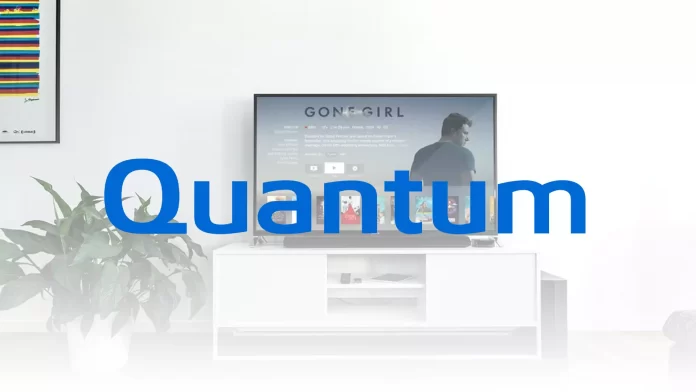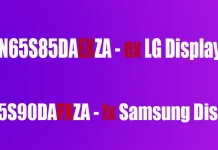Many people already know or at least have heard of HDR (High Dynamic Range) technology. In short, it is used to improve image quality. You may have noticed a difference in the pictures you take without and with HDR on your smartphone. Colors in photos with HDR are richer and more appealing to the eye than those without. The same technology is also used in video games and of course in TVs.
However, not everyone knows what Quantum HDR is. And this isn’t surprising, because this technology is used most often in Samsung TVs and essentially means the union of two technologies – Quantum Dot and HDR. And values like 16X or 32X indicate brightness. Anyway, let’s take a closer look at this technology and what is the difference between Quantum HDR 16X and 32X.
What is HDR?
The two most important components of an image are contrast, or the ratio of the brightest to darkest areas the TV can show, and color rendering – how realistic the hues are reproduced on the screen. This is what determines how good the picture will look to the viewer’s eyes.
If you put two TVs next to each other, one with better contrast and color rendering, and one with a higher resolution, then the higher contrast model will seem like a winner to everyone. Despite the difference in resolution, the picture on it will be more realistic, with a sense of “depth”. In other words, having high natural contrast and correct color rendering is much more important than having 4K with unimportant indicators.
Well, HDR technology greatly enhances both contrast and color. Bright areas of the image can become much, much brighter than on a regular TV, so the picture looks “deeper” and more realistic. The color palette expands with deeper shades of red, green, and blue – and all possible combinations.
What is Quantum Dot?
In fact, QLED and Quantum Dots are the same things. The image is “created” in the same way as on LCD/LED displays, but the diodes themselves are different. Whereas in LED displays the diodes emit white light, in QLED TVs the diodes emit blue light. Conventional LEDs also emit blue light, but they are coated with a yellow phosphor, so they emit white light.
We all know about the RGB spectrum, which means red, green, and blue. By mixing these three colors, we can get any other color we can see. However, blue light is the most energy-consuming, so on QLED TV screens, blue is created first. The TV then refracts the blue into a lower energy state to create red or green.
Because of the blue light, the maximum brightness that QLED displays can provide is 4,000 nits, while standard LED displays can only provide 1,000 nits. Here are the key points you need to know:
- Quantum dot screens (QLEDs) are improved LED screens.
- They are made better by the different types of light that the diodes emit.
- QLED screens’ diodes emit blue light, while LEDs emit white light.
- QLEDs are used in more expensive TVs.
However, you have to know that Quantum Dots (QLEDs) are just advanced LED technology.
What is the difference between HDR and Quantum HDR?
As mentioned at the beginning, Quantum HDR is a mix of two technologies – Quantum Dot and HDR. Each TV screen is made up of many tiny pixels that display color and brightness information. The image looks good, especially on the best resolution screens, but Quantum HDR technology improves it significantly.
Quantum dots are tiny particles that are only 50 atoms wide. They cannot be seen with the naked eye, so small they are. These quantum dots take the place of the much larger pixels traditionally used in TV panels.
HDR provides high peak brightness in the brightest areas of an image, but quantum dots allow for even greater brightness while preserving image detail. In practice, this means that in theory you could see a sunrise scene on the screen and feel like you’re looking directly at the sun. The quantum dots will create an image so real and bright that it will feel like you’re looking out your window.
Quantum HDR screen is much better at capturing all the details, brightness, and color accuracy. In fact, these subtle gradients will look as real on the screen as if you saw them with your own eyes in real life.
What is the difference between Quantum HDR 16X and 32X?
Finally, you may come across the mysterious terms Quantum HDR 16X and Quantum HDR 32X. Here again, there is nothing new in technical terms – the terms were needed to distinguish some Samsung TV models.
The labels “16X” and “32X” indicate brightness and are multipliers of some “base value”. Based on the known characteristics of Samsung HDTVs, this value is probably 100 nits. That is, you just need to multiply 16 or 32 by 100 and you will know the brightness value of your TV. In this case, it would be 1600 and 3200 nits respectively.
So the only difference between these values is brightness. The higher the value, the brighter the picture will be on your TV.
You might think that 3200 nits TV models are cooler, but it’s not quite like that. Not everyone needs a TV with such a high brightness rating. Especially if you often watch it in a dark room.
Of course, you can lower the brightness manually in the TV settings. However, the question arises – why would you overpay in this case? After all, there is a model with less brightness and price and the image quality doesn’t change.






